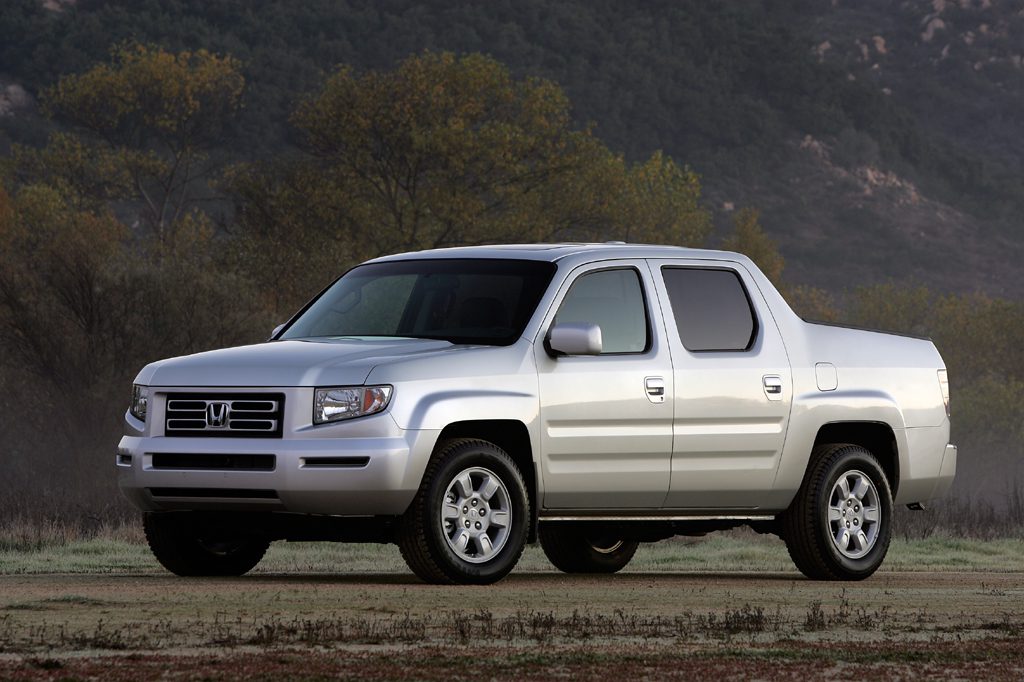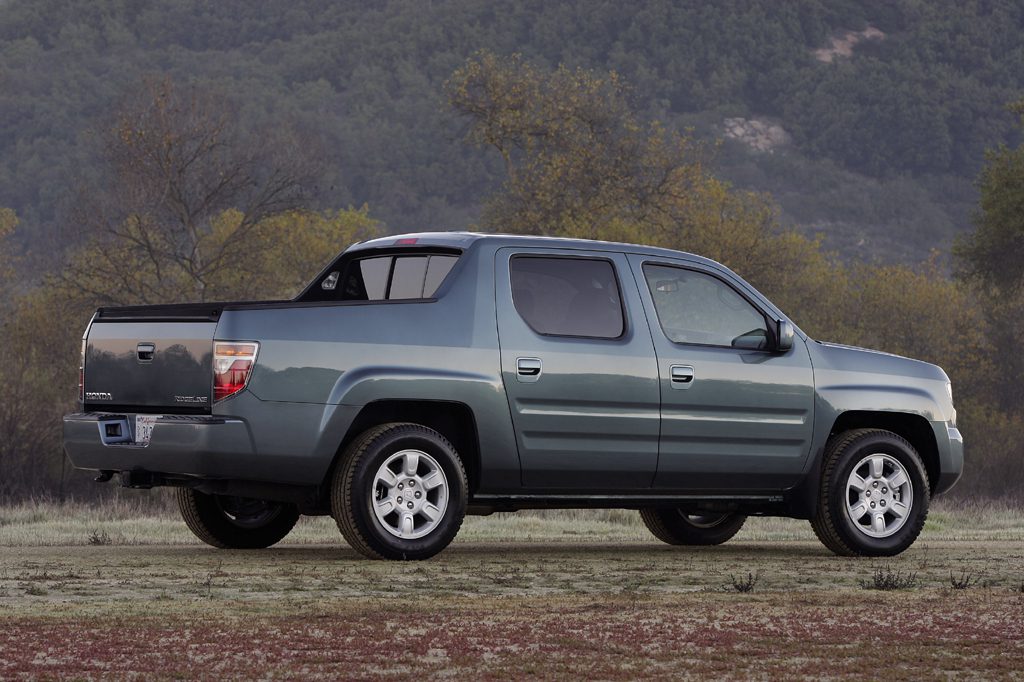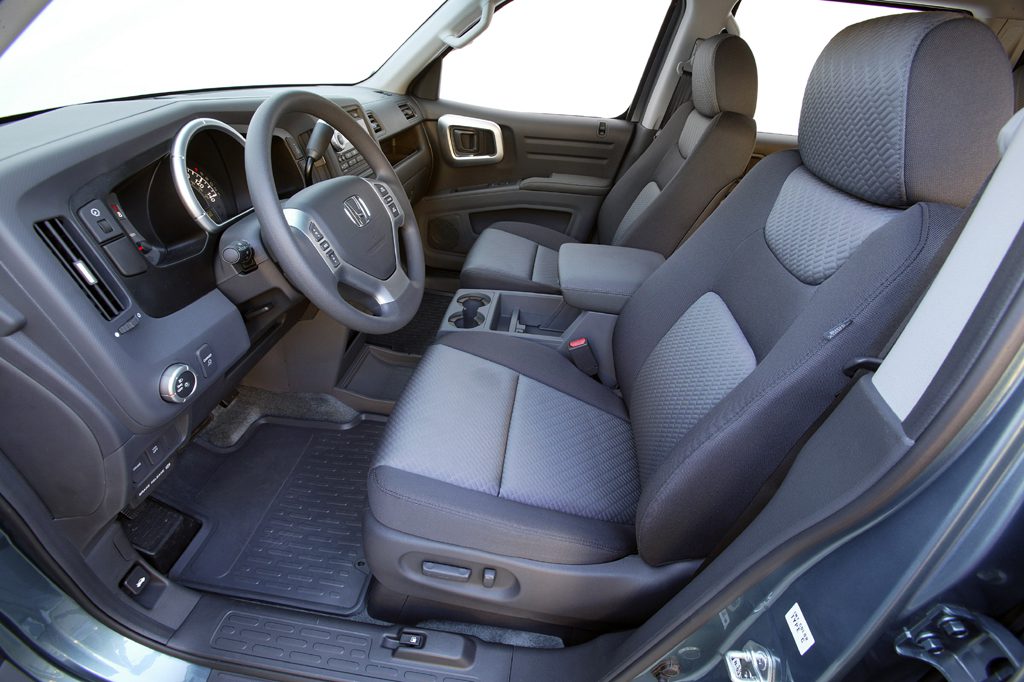| Compact pickup truck; Built in Canada |
|
|
| Good condition price range: $8,700 – $37,100* |

2006 Honda Ridgeline

2006 Honda Ridgeline

2006 Honda Ridgeline

2006 Honda Ridgeline
| Pros: |
|
| Cons: |
|
Ridgeline blends pickup utility with carlike civility in a solid, sensible, Honda-style package. The light-duty design won’t suit hardcore truckers, but they aren’t likely to be Honda-shopping anyway. Ridgeline should meet the needs of families and recreational users–just as Honda intended. Innovative pickup features help give Ridgeline a Recommended rating, but strong resale value translates to hefty prices on the used-pickup market.
Overview
Honda’s first pickup truck was a compact-class five-passenger, four-door crew cab with a five-foot cargo bed. Several Ridgeline design features were unusual in the pickup market, including an independent rear suspension rather than a solid axle, and unibody construction as opposed to traditional body-on-frame.
Made of dent-resistant plastic, the cargo box had a steel-reinforced floor that incorporated a locking “trunk” bin at the rear. The two-way drop-down/swing-out tailgate also set Ridgeline apart from the pack. Six tie-down cleats in the bed are capable of holding 350 pounds each.
Competitors included the Dodge Dakota and Toyota Tacoma, but Ridgeline had a shape and feel all its own, distanced from traditional domestic-model pickups.
Sole powertrain was the same 255-horsepower V6 engine and five-speed automatic transmission used in Honda’s Pilot SUV. Ridgeline borrowed the Pilot’s VTM-4 all-wheel-drive system, too. The system normally powers the front wheels and engages the rear wheels when the front tires slip. Though Ridgeline was not designed for severe off-road use and lacked low-range gearing, a dashboard button could lock in a 50/50 front/rear power split for extra traction.
RT, RTS, and top-of-the-line RTL models were offered. Exclusive to RTL versions were such features as leather upholstery, heated front seats, a sunroof, and navigation system. All models had front bucket seats and a 60/40-split rear bench, with cushions that flipped up to increase in-cab storage space.
Antilock four-wheel disc brakes, antiskid/traction control, and 17-inch wheels were standard. So were front torso side airbags and head-protecting curtain side airbags. Covering both seating rows, the curtains were designed to deploy in a side impact or when sensors detected an impending rollover.
Ridgeline’s transmission shift lever was mounted on the steering column. Between the front seats, a center console could slide fore and aft by several inches, to customize storage space.
Yearly Updates
| 2007 Ridgeline XM satellite radio became standard on the RTS model, along with a moonroof. All Ridgelines gained a lighted vanity mirror. A new RTX trim level stood above the base RT. Otherwise, little change was evident on 2007 models. |
| 2008 Ridgeline The 2008 Honda Ridgeline was little changed. |
| 2009 Ridgeline Ridgeline got freshened exterior and interior styling for 2009. The RTX model was dropped. |
| 2010 Ridgeline The 2010 Honda Ridgeline was largely unchanged following its model-year 2009 freshening. |
| 2011 Ridgeline The 2011 Honda Ridgeline sees no major changes. |
| 2012 Ridgeline The Honda Ridgeline was given freshened styling for 2012 along with a new mid-line Sport trim level. |
| 2013 Ridgeline Ridgeline soldiered into 2013 with no major changes. The only update of note was that a rearview camera became standard on all models, not just the most expensive ones. |
| 2014 Ridgeline In 2014, Ridgeline added a new top-of-the-line Special Edition model for the final year of its first generation. Ridgeline took two years off and was expected to return with a redesigned truck for 2017. |
